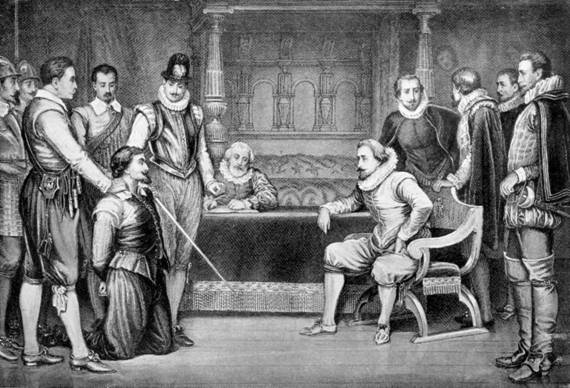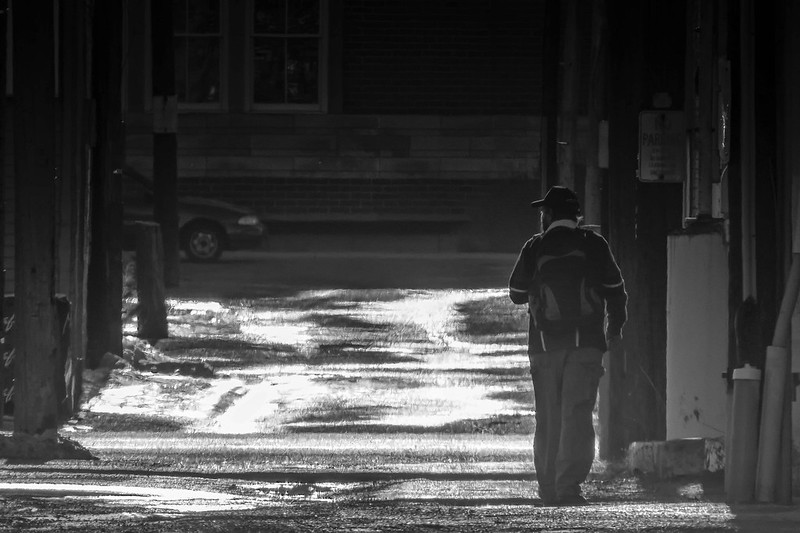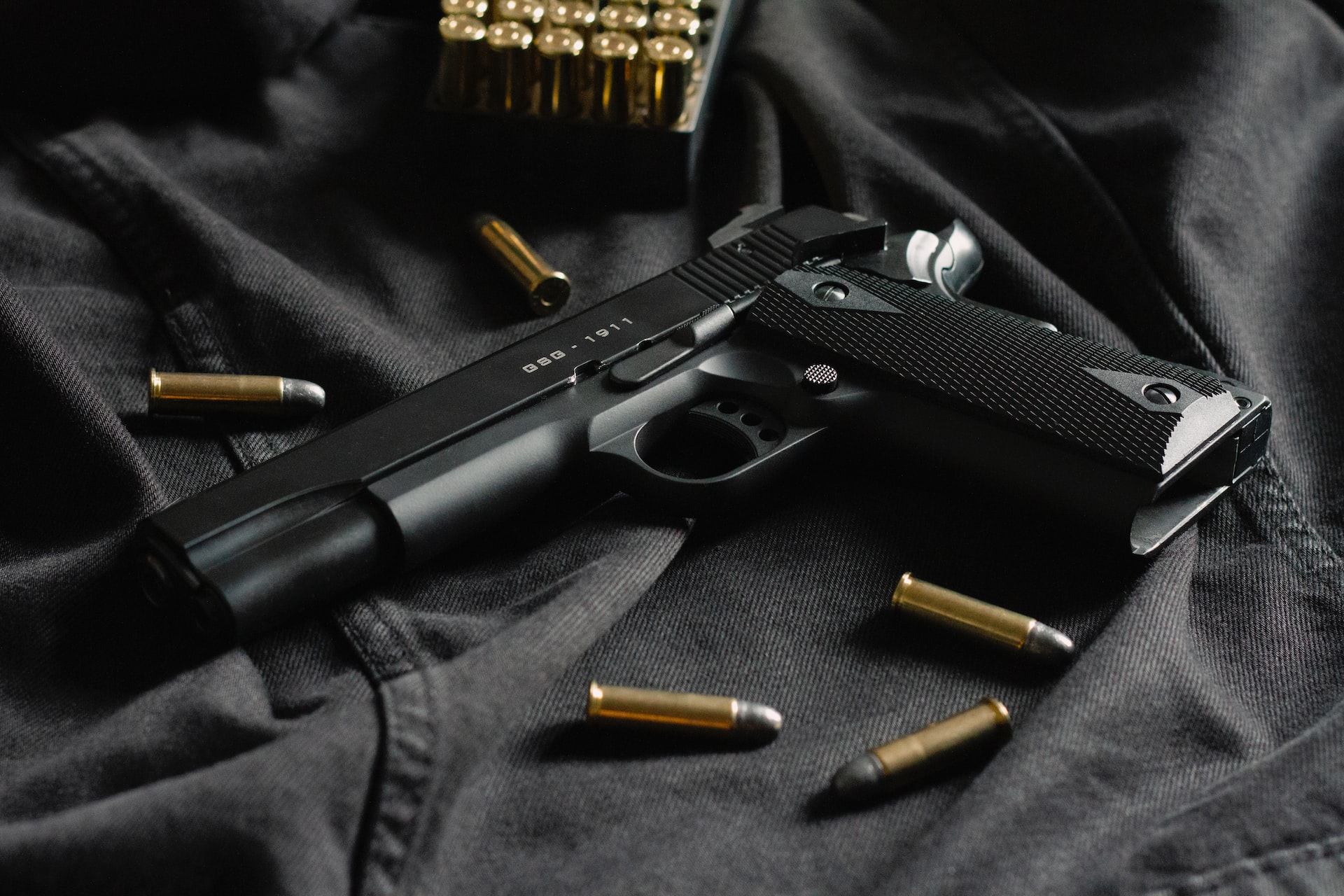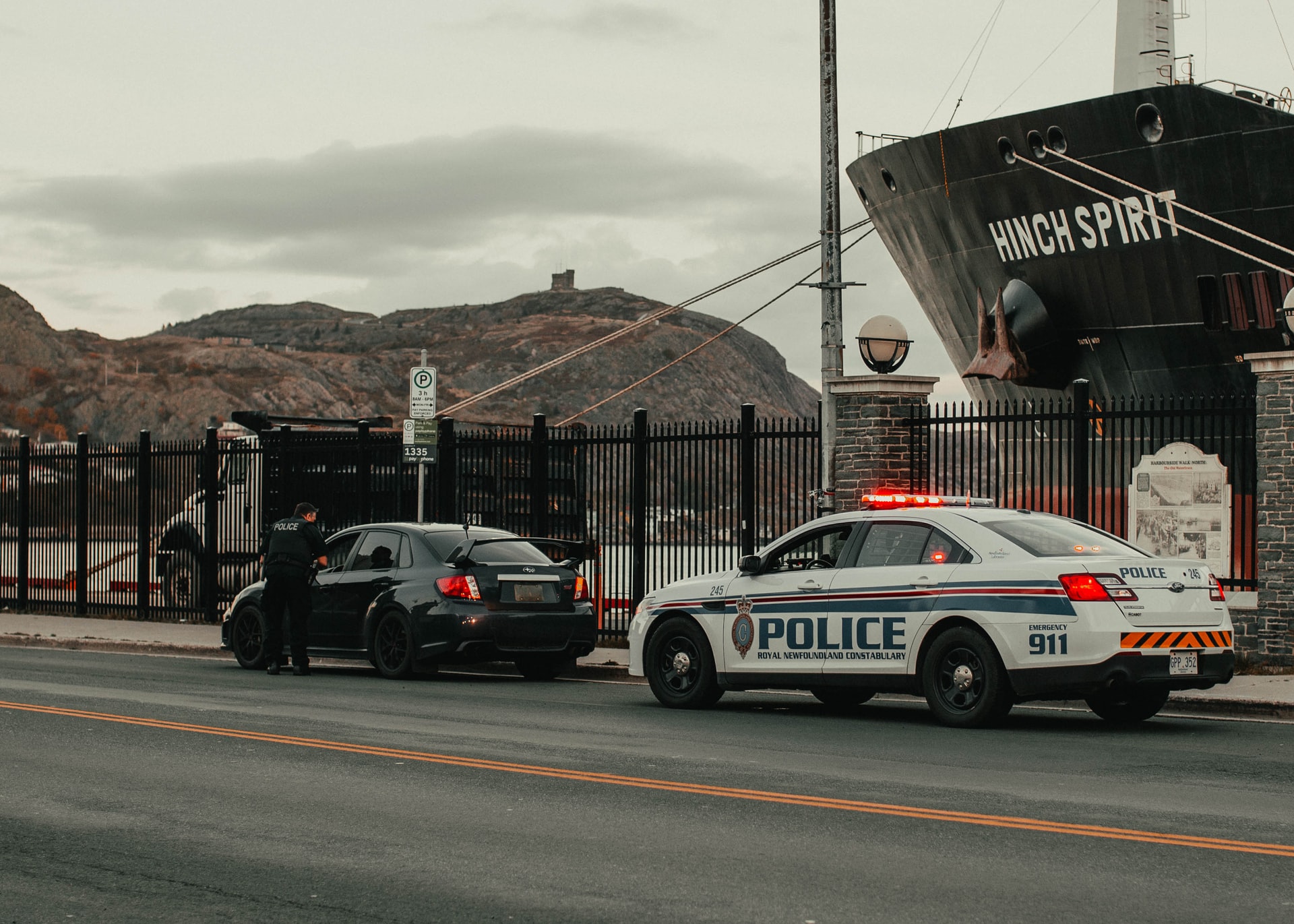This week our top three summaries cover: Voluntariness, Unbalanced Jury Instructions, the Air of Reality Test, After the Fact Conduct, Directed Verdicts, Reasonable Inferences, and Planning and Deliberation for Murder.
R. v. Othman (ONCA)
[Dec 24/18] Voluntariness – Threats/Inducements: Creating Impression that Credibility Highest at Interview, Nature of Inducements – 2018 ONCA 1073 [Simmons, Juriansz and Benotto JJ.A.]
AUTHOR’S NOTE: The test of statement voluntariness is not a search for obvious threats or inducements; it is a test capable of more nuanced analysis. In this decision the Ontario Court of Appeal again reminds us that police officers cannot suggest that the legal consequences of maintaining one’s silence would be more negative than providing a statement in the interview. As well, such an inducement need not be the only or immediate factor that leads to a confession to render the confession involuntary. In respect of Defences advanced, a trial judge is obligated to give an instruction on a specific defence even if cross-examination of the accused makes it unlikely; the air of reality for the defence can arise from direct examination of the accused or the evidence of other witnesses. Finally, the core of a balanced jury instruction is that a judge must make reference to evidence that supports the Defence version of events, even if they do not find it persuasive to their personal opinion.
Pertinent Facts
At a party, the Appellant and his group of friends exited the residence. “As they were making their way to the street, one member of the appellant’s group damaged a car mirror. A group of the partygoers, estimated at between 20 and 70 people, left the house party to confront the appellant’s group on the street. The confrontation resulted in violence. Among other things, the instigator struck the initial victim with a 2×2 tree stake. Soon after, the appellant produced a pocket knife and stabbed one of the partygoers (the “victim”), causing his death.” (Para 2)
The Appellant “spoke to a lawyer and was then interviewed by the police. The interview lasted several hours. During this police interview, the appellant admitted that he stabbed the victim. The appellant’s statement was ruled voluntary and was used to cross-examine him at trial.” (Para 3)
“the interviewing officer made the following statements to the appellant prior to his inculpatory statement:
Officer: …people will judge you on how you are in here, right?
…
Officer: So when that goes and gets played in court andyou don’t get a-, say, you don’t get an opportunity to ever say your side of the story and you get convicted of murder, right, and the jury gets to watch, and the judgegets to watch…
Officer: If you didn’t do any of that stuff, right? … Thenyou should feel free in telling me what you did last night, where you were, who you were with.
Appellant: I’d rather not comment on all that though.
Officer: Well, there you go. So then no one’s gonna believe you, right?…
Officer: So if you, if you can tell me how you cut yourfinger and it’s got nothing to do with the stabbing, why wouldn’t you tell me? You got nothing to lose and everything to gain, right?
Appellant: I’ve been advised not to, sir.
…
Officer: Well, trying, trying to open your eyes to think of other possibilities, right, cause it’s your decision, right? It’s not my decision whether you give your side, it’s not anybody else’s decision, it’s yours, right? And I’m tellingyou, as a normal person, nobody’s gonna believe that-, what happened to your finger unless you tell the story. Ifyou decide not to, no one’s gonna believe it came from anything other than you stabbing somebody….
Officer: So then it comes down to credibility, right? So ifyou sit here and say that it didn’t happen at this party, when this guy got stabbed, if that’s not when it happenedand then it gets proven that it is and then you get up andyou say, well, now, I’m gonna tell my story. Now’s thetime and place to tell my story. How many people are gonna believe you then versus who believe you nowwhen it’s the time, right?
Inducements Need not be Obvious
“As was the case in R. v. Wabason, in our view, the trial judge “confine[d] too narrowly the notion of inducements or threats leading to a statement”: at para. 15.” (Para 13)
“Based on our review of the record, the interviewing officer’s statements to the appellant during the interview went well beyond saying the appellant might adopt a trial strategy of not testifying and crossed the line into undermining the legal advice the appellant had received to remain silent. In particular, at least one of the officer’s statements asserted more generally that the appellant may never get an opportunity to tell his side of the story. More significantly, the officer’s statements suggested the appellant would not be believed if he did not tell his side of the story to the police and further, that a trial court would see him, on video, refusing to comment.” (Para 14)
“As noted in R. v. Van Wyk, [1999] O.J. No. 3515 (S.C.), at paras. 160-68, police assertions to the effect that an accused’s credibility is at its highest during a police interview and that a trial court will see and take a negative view of a refusal to speak are legally incorrect and undermine the accused’s right to silence.” (Para 16)
“In our view, the interviewing officer’s comments, as set out above, constituted both a threat and an inducement as they suggested negative legal consequences if the appellant failed to speak and positive consequences if he spoke.” (Para 17)
“We conclude that the trial judge erred in failing to recognize that the interviewing officer’s comments amounted to both threats and inducements.” (Para 19)
“the interviewing officer’s prior assertion that the trial court would see the appellant refusing to comment became an implicit quid pro quo –the appellant would suffer negative legal consequences if he maintained his position that he had done nothing wrong and did not want to comment and he would be viewed in a better light by the judge and jury if he accepted responsibility.” (Para 20)
“Although we acknowledge that the immediate trigger for the appellant’s inculpatory statement may have been the appellant’s despair at seeing his girlfriend’s incriminating video statement, to render a statement involuntary, threats and inducements need not be the sole contributing factor: Oickle, at para 57.”
The Air of Reality Test for Putting Defences to a Jury
“In concluding there was no air of reality to the defence of defence of others, the trial judge erred in focusing on what the appellant said in cross-examination.” (Para 27)
“On our reading of the record, there were other aspects of the appellant’s testimony in-chief and his statement to the police, as well as the testimony of others, that provided a basis for the defence to be left with the jury. Although aspects of the appellant’s cross-examination may have undermined the basis for that defence, it was for the jury to determine what aspects of the evidence they would rely on, not the trial judge. The fact that the trial judge referred to the assault on the initial victim as part of the context for his instructions on self-defence did not obviate the requirement to charge on defence of others.” (Para 28)
Unbalanced Jury Instructions
“We also accept the appellant’s submissions that the trial judge’s instructions to the jury on self-defence were unbalanced. Not only did the trial judge telegraph to the jury that he did not find the appellant’s testimony about his injuries credible, the trial judge also failed to refer to evidence that supported the appellant’s version of events.” (Para 29)
“For example, the trial judge invited the jury to examine a photograph of the appellant to observe whether they could see the facial bruises the appellant claimed to have suffered. The photograph was taken less than 24 hours after the incident. The trial judge did not draw the jury’s attention to the testimony of the police photographer who had agreed that bruises often do not show up immediately after an event, and added it was his preference to have individuals return a few days later for photographs (which was not done with the appellant).” (Para 30)
“Although a trial judge is entitled to express an opinion concerning his or her view of the evidence, by stating his opinion by reference to common sense and also failing to refer the jury to evidence pointing the other way, the trial judge may well have undermined the jury’s ability to evaluate the appellant’s evidence fairly.” (Para 32)
Appeal was allowed and a new trial ordered (Para 34)
R. v. McKenna (ONCA)
[Dec 20, 2018] After the Fact Conduct – Prior Non-Attendance on a Trial Date – 2018 ONCA 1054 [I.V.B. Nordheimer J.A., with J.C. MacPherson J.A. Concurring, Grant Huscroft J.A. Dissenting]
AUTHOR’S NOTE: After the fact conduct evidence requires the court to walk a tightrope to even allow the Crown to adduce it. Herein, the trial judge refused to hear from the Appellant in the voir dire to adduce the evidence. This is an error of law recognised by the Appeal Court. Further, when giving the charge to the jury, the trial judge failed to summarize the possible alternative explanations for the after the fact conduct. The trial judge had done so at during the mid-trial instruction and had referred to this portion of the Defence argument during the Defence Theory portion of the charge to the jury. However, due to the dangerous nature of after the fact conduct evidence, this was insufficient to save the conviction.
Pertinent Facts
The Appellant was convicted of two counts of sexual assault by a jury after a 5-day trial and appealed (Para 1)
“Between July 2014 and May 2015, the appellant’s relationship with his girlfriend ended. She terminated her suretyship, but the appellant did not voluntarily surrender himself into custody. During this same time period, the appellant ceased communicating with his trial counsel, who brought a successful motion to be removed as counsel of record in February 2015. The appellant was not present for this motion.” (Para 5)
“The appellant did not appear on the May 25, 2015 trial date. Consequently, the trial judge issued a warrant.” (Para 6)
At the re-scheduled trial “the prosecution did not seek to put into evidence the failure of the appellant to attend on his first trial date. The appellant did not call any evidence. On the second day of jury deliberations, a mistrial was declared after the jury advised that they were unable to unanimously agree on a verdict.” (Para 8)
“As part of the pre-trial motions at the second trial, the prosecution sought permission to lead evidence about the appellant’s failure to attend for his original trial date. The prosecution contended that this evidence was admissible as “consciousness of guilt” evidence. The prosecution’s evidence on the voir dire consisted of a written Application Record. The appellant sought to give evidence on the voir dire to establish, as his counsel advised the trial judge, that he “failed to appear at his trial because of his surety revoking [and] just being in an emotional and financial dire straits”.”(Para 11)
“The trial judge ruled that the appellant would not be permitted to testify on the voir dire. His stated rationale for this conclusion was as follows:
So that leads me to conclude that while the accused may well have an explanation to provide, that explanation ought to be presented to the finders of fact and to the jury.
I do not see any utility in having that evidence presented here in this forum today when it is my opinion that it ought to be heard by the jury.” (Para 12)
“The voir dire then proceeded with argument from counsel. On November 23, 2016, the trial judge ruled that the evidence of the appellant’s failure to attend his original trial date was admissible at trial.” (Para 13)
The mid-trial instruction on after the fact conduct was from specimen jury instructions, but the final instruction was not. The trial judge in final instructions indicated:
“You may use this evidence of after the fact conduct, along with other evidence, to support an inference of guilt only if you have rejected any other explanation for this conduct. On the other hand, if you find that Mr. McKenna’s failure to return to Ontario for his trial was related to the commission of the offences charged, not to something else, you may consider this evidence, together with all the other evidence in reaching your verdict.” (Para 16)
Refusing the Ability to Defence to Call Viva Voce Evidence on the Voir Dire & to Conduct a Probative v Prejudicial Analysis
“It was critical, to a proper decision on whether the evidence of the missed trial date ought to be admitted, for the trial judge to know the circumstances surrounding the appellant’s failure to appear on that trial date. Central to those circumstances was the appellant’s explanation for his failure to appear. Yet the trial judge refused to allow the appellant to give evidence on the voir dire, the whole purpose of which was to decide the admissibility question. Without hearing the appellant’s explanation for his failure to attend, or at least a summary of the appellant’s explanation from counsel, I am unable to understand how the trial judge purported to conduct a proper relevancy analysis or to properly exercise his discretion whether to admit the evidence.” (Para 20)
“What is clear, however, is that before rendering a proper legal ruling, the trial judge must have the necessary factual foundation, in some form, on which to make an informed decision.” (Para 21)
“I recognize that, had the trial judge conducted a proper voir dire, he might nonetheless have concluded that the evidence was relevant. That is not the end of the admissibility inquiry, however. There is still the question of whether the prejudicial effect of the evidence outweighs its probative value. That is a separate inquiry that the trial judge was obliged to consider. As Rothstein J. said in R. v. White, 2011 SCC 13, [2011] 1 S.C.R. 433, at para. 50″):
Otherwise admissible evidence may still be removed from consideration by the jury on the basis that it is more prejudicial than probative. (Para 22)
“The failure to engage in that second stage is an error of law. Given the state of the record before us, I cannot reach a proper conclusion on that second stage, especially absent the appellant’s evidence on the issue, or at least counsel’s summary of what that evidence would have been.” (Para 23)
“The probative value/prejudicial effect test is of particular importance when considering post-offence conduct evidence because of the recognized concern regarding its potential misuse by jurors. As Rothstein J. also said in White (2011), at para. 23:
That being said, though the use of such evidence has an extensive history in our criminal jurisprudence, it has also long been recognized that the introduction of post-offence conduct for the purpose of establishing the accused’s “consciousness of guilt” carries with it a substantial risk of jury error. Jurors may be tempted to “jump too quickly from evidence of post-offence conduct to an inference of guilt” without giving proper consideration to alternate explanations for the conduct in question. [Citations omitted.]” (Para 24)
Failure to List the Possible Alternative Explanations for the After the Fact Conduct
“I appreciate that trial judges are not slaves to specimen instructions. They are entitled to depart from the language of the specimen instructions as they deem necessary or to devise language of their own. What is crucial, however, is that the legal proposition that underlies the instruction must be recognized and communicated in a proper fashion and it must be related to the evidence. That did not happen in this case. Specifically, the trial judge did not advise the jury about any alternative explanations for the appellant’s conduct. He failed to do so notwithstanding the express direction, in the specimen instruction, to “review relevant evidence about explanations”. (Para 28)
“The need to caution the jury that there might be alternative explanations for the impugned conduct has been made clear in a number of cases. The need for this caution was stressed in R. v. White, [1998] 2 S.C.R. 72 (“White (1998)”). For example, Major J. said, at para. 57:
As previously noted, there is a risk that juries might jump too quickly from evidence of post-offence conduct to an inference of guilt. However, the best way for a trial judge to address that danger is simply to make sure that the jury are aware of any other explanations for the accused’s actions, and that they know they should reserve their final judgment about the meaning of the accused’s conduct until all the evidence has been considered in the normal course of their deliberations.” (Para 30)
“The trial judge did not provide the jury with any alternative explanations. His charge is silent on this issue but for his summary of the Crown and defence positions.” (Para 34)
“In my view, the trial judge did not meet his obligation, as enunciated in both White (1998) and White (2011), to ensure that the jury was aware of, and considered, specific alternative explanations for the appellant’s post-offence conduct. This failure arose first from his decision to bar the appellant from giving evidence on the voir dire. It then continued when the trial judge failed to fully obtain the alternative explanations and include them in his charge. The absence of these alternative explanations raised the very real risk that the jury would misuse the post-offence conduct evidence, which is precisely the concern that underlies the requirement for the necessary caution in the first place.” (Para 36)
“In addition to these concerns, I would also note that the trial judge did not include in his charge to the jury the type of cautionary note that was discussed in White (1998) and White (2011) and was referred to, most recently, in R. v. Rodgerson, 2015 SCC 38, [2015] 2 S.C.R. 760. In Rodgerson, Moldaver J. commented favourably, at para. 25, on this particular aspect of the trial judge’s charge:
I wish to caution you about a potential danger concerning post offence conduct. Post offence conduct may appear more probative than it really is, and may be, by its very nature, less reliable than it seems, or may be consistent with other less obvious explanations than the one advanced by Crown counsel.” (Para 38)
“I do not agree with the suggestion that the trial judge’s reference to the alternative explanation offered by the defence in closing submissions is sufficient, in this instance, to cure the problem. I say that for two reasons. One is the salient reality that explanations coming directly from the judge will carry more weight with the jury than will simply repeating what defence counsel has said. The other is that the reference itself was completely detached from the trial judge’s original post-offence conduct instruction. Articulated in isolation, it did not serve to remind the jury that they could only use this evidence in relation to the guilt of the appellant if they rejected any other explanation for his conduct.” (Para 39)
“I would add one further observation. If post-offence conduct is properly admitted at trial, and that post-offence conduct by itself constitutes a criminal offence, then it seems to me that trial judges should consider, in appropriate cases, including the equivalent of a “bad character” instruction. In such cases, the jury would be additionally instructed that, even if they do not view the post-offence conduct as evidence tending to show the accused is guilty of the offence being tried, they must also ensure that they do not use the evidence to conclude that the accused person is the type of person who would have committed the offence: see R. v. Samuel, 2013 ONCA 551, 310 O.A.C. 175, at paras 45-46.” (Para 45)
Appeal was allowed and a new trial ordered (Para 47)
R v Bird (ABQB)
[December 18, 2018] Directed Verdicts – Reasonable Inferences & Planning and Deliberation for First Degree Murder – 2018 ABQB 1026 [A.D. Macleod J.]
AUTHOR’S NOTE: Herein Justice Macleod provide some useful guidance as to how one can tell the difference between speculation/conjecture and a reasonable inference from primary facts. The question is important to whether a directed verdict of acquittal can be obtained in a case based on circumstantial evidence. Justice Macleod outlines that opportunity for planning and deliberation is not evidence of planning and deliberation.
Pertinent Facts
“There was no prior animus between the Accused and the Deceased. On the day of the killing, the Accused and the Deceased got into an altercation which escalated rapidly. The Deceased punched the Accused. Within moments, the Deceased was fatally wounded at the hands of the Accused.” (Para 144)
Reasonable Inferences and Directed Verdicts
“The Crown’s evidence of planning and deliberation is entirely circumstantial. Where the evidence is circumstantial, the question is whether the Crown’s desired inference may reasonably be inferred from the circumstantial evidence: R v Arcuri, 2001 SCC 54 (CanLII) at para 21, [2001] 2 SCR 828. I must engage in a limited weighing of the Crown’s evidence to assess whether it is reasonably capable of supporting an inference of planning and deliberation: Arcuri at para 23.” (Para 129)
“However, this weighing is limited. I am not to decide the ultimate issue of guilt, draw inferences, or assess credibility: Ibid at para 23. I also cannot direct a verdict of not guilty simply because the Crown’s evidence is weak: Ibid at para 33. I am only to consider inferences that favour the Crown where more than one inference can reasonably be drawn from the evidence: R v Sazant, 2004 SCC 77 (CanLII) at para 18, [2004] 3 SCR 365. (Para 130)
“A properly instructed jury acting reasonably will only convict if the Crown’s circumstantial evidence is sufficient to establish guilt beyond a reasonable doubt: R v Charemski, [1998] 1 SCR 679 at paras 20, 33, 35, 1998 CanLII 819, per McLachlin J (dissenting)…. Therefore, the Crown’s evidence must reasonably support an inference of planning and deliberation beyond a reasonable doubt.” (Para 131)
“To conclude, the issue before me is whether the Crown’s circumstantial evidencesupports a reasonable inference of planning and deliberation beyond a reasonable doubt. This does not include an assessment of whether there are other reasonable inferences inconsistent with guilt. That task is for the trier of fact. I must direct a verdict of not guilty on first degree murder if there is insufficient evidence upon which a reasonable jury, properly instructed, could find planning and deliberation beyond a reasonable doubt.” (Para 134)
“The Crown’s evidence must establish the primary facts that it contends are the basis foran inference of planning and deliberation. From these primary facts, I must assess whether an inference of planning and deliberation is reasonable. An inference is a deduction of fact that may logically and reasonably be drawn from another fact or group of facts proven in these proceedings: David Watt, Watt’s Manual of Criminal Evidence (Toronto: Thomson Reuters, 2018) at 12.01.” (Para 135)
“Speculation and conjecture cannot be relied on as the basis for a reasonable inference. It is not enough to create a hypothetical narrative that includes all of the primary facts. That a possibility or opportunity exists based on the evidence does not mean the inference is reasonable. Nonetheless, an inference can be difficult to draw and still be a reasonable inference: R v Munoz (2006), 86 OR (3d) 134, 2006 CarswellOnt 673 (WL Can) at para 31 (Ont SCJ).” (Para 136)
“The Crown argues that the whole of the evidence reasonably supports an inference of planning and deliberation. Between the time the Accused was punched and when he commenced shooting, he could have conceived of a plan to enter 402B, find his gun, load or check if it was loaded, open the door, and kill the Deceased. The Accused could have formed a simple plan, implemented immediately after conception. The Accused had adequate time, perhaps between 1 to 2 minutes, to consider and weigh the consequences of his course of action. This, the Crown argues, is reasonable to infer based on the evidence.” (Para 143)
“The Crown asks for an inference of a 1-2 minute window based on this evidence. That is unreasonable given that the only witness who suggested a timeframe of up to 2 minutes was equivocal and the weight of the evidence suggests something in the range of 1 minute, or 45 to 75 seconds. The principle that only inferences favourable to the Crown are to be considered does not mean that I am forced to accept unreasonable inferences marginally supported with equivocal evidence.” (Para 148)
Planning and Deliberation
“A plan is a calculated scheme or design that has been carefully thought out, the nature and consequences of which have been considered and weighed. The plan can be simple and uncomplicated: R v Widdifield (1961), 6 Crim LQ 152 at p 153 (Ont SC), cited in R v Nygaard, [1989] 2 SCR 1074, [1990] 1 WWR 1.” (Para 138)
“Deliberate means “considered” and not “impulsive”. A deliberate decision is slow and cautious. The Accused must take time to weigh the advantages and disadvantages of his plan: Widdifield. The Accused must have carefully thought out the act, rather than proceeding hastily, rashly, or impulsively: Turningrobe at para 12. Deliberation does not require a lengthy period of time: Turningrobe at para 12.
“Finally, an opportunity to plan and deliberate is not by itself sufficient to warrant a reasonable inference that the Accused in fact did plan and deliberate: R v Quesnel, [1991] MJ No 64 (QL) at para 17, 4 CR (4th) 118 (Man CA).” (Para 142)
“The Accused told the Deceased, “I’m not going to do anything,” after the Deceased punched the Accused. The Crown suggests that it can be inferred that either the Accused was being deceitful, lulling the Deceased into a false sense of security, or the Accused was being honest and changed his mind.” (Para 149)
“The problem is, if the Accused was being honest but changed his mind, an inference of planning and deliberation does not naturally or logically flow because it is human experience that a person can change their mind quite unthinkingly.” (Para 150)
“The Crown contends that if the Accused was being deceitful, then he had already formed his plan to retaliate with lethal force against the Deceased immediately after the Accused was punched. An inference of planning does not flow logically from a time period which would amount to approximately 1-5 seconds. Planning requires calculation and careful consideration of the consequences, even if it is a simple plan. This is unlikely to occur in 1-5 seconds in the midst of a heated exchanged after immediately receiving a blow to the face.” (Para 151)
“If there was a plan, it had to be a simple and uncomplicated one, executed immediately after it was formed. However, I find that the evidence does not support an inference that the Accused carefully thought out the nature and consequences of his actions. This was a senseless killing. It was a wholly disproportionate response to a heated exchange between the Accused and the Deceased. There was nothing slow and cautious about what the Accused did.” (Para 161)
“In the end, the Crown’s evidence of planning and deliberation amounts to little more than proof that the Accused had the opportunity to plan and deliberate, which is not enough to reasonably support the desired inference. The Crown’s evidence, assessed as a whole, is not sufficient to support a reasonable inference of planning or deliberation beyond a reasonable doubt.” (Para 162)






